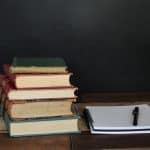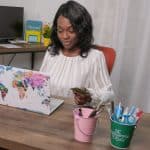Social Media Advertising: Leveraging Platforms to Drive Ecommerce Sales
Social media has revolutionized the way businesses connect with their audience and market their products or services. In today’s digital age, social media advertising has become a powerful tool for driving ecommerce sales. By leveraging the platforms available, businesses can effectively reach and engage their target audience, ultimately boosting their bottom line. In this article, we will explore the key strategies and best practices for utilizing social media advertising to drive ecommerce sales.
Introduction
In the fast-paced world of ecommerce, the importance of social media advertising cannot be overstated. With billions of active users across various platforms, social media provides businesses with a unique opportunity to connect with their target audience on a personal level. By effectively leveraging these platforms, businesses can increase brand visibility, drive traffic to their websites, and convert social media users into loyal customers.
Understanding Social Media Advertising
Social media advertising involves using platforms such as Facebook, Instagram, Twitter, and LinkedIn to promote products or services to a specific audience. Unlike traditional advertising methods, social media advertising allows businesses to target their ads based on demographics, interests, and behaviors, ensuring that their messages reach the right people at the right time. This targeted approach increases the chances of driving relevant traffic and generating sales.
Choosing the Right Social Media Platforms
When it comes to social media advertising, not all platforms are created equal. Each platform has its own unique user base, features, and advertising capabilities. Therefore, it’s crucial for businesses to carefully select the platforms that align with their target audience and advertising goals. For example, Instagram is popular among younger demographics, while LinkedIn is more suitable for B2B advertising. By understanding the strengths and weaknesses of each platform, businesses can make informed decisions and maximize their advertising efforts.
Setting Goals and Objectives
Before launching a social media advertising campaign, it’s important to define clear goals and objectives. These goals can vary depending on the business’s specific needs, but common objectives include increasing brand awareness, driving website traffic, generating leads, and boosting sales. By setting specific, measurable, attainable, relevant, and time-bound (SMART) goals, businesses can track their progress and make adjustments to optimize their campaigns effectively.
Targeting the Right Audience
One of the key advantages of social media advertising is the ability to target a specific audience. By narrowing down the target audience based on demographics, interests, and behaviors, businesses can ensure that their ads are shown to people who are more likely to be interested in their products or services. Conducting thorough market research, analyzing customer data, and utilizing platform-specific targeting options are effective strategies for reaching the right audience with precision.
Creating Compelling Ad Content
To capture the attention of social media users, businesses must create compelling ad content that stands out from the crowd. Ad content should be visually appealing, concise, and tailored to the target audience’s preferences. The use of high-quality images, videos, and engaging copywriting techniques can significantly enhance the effectiveness of social media ads. Additionally, incorporating storytelling elements and highlighting unique selling propositions can help create a lasting impression on potential customers.
Optimizing Ad Campaigns
Once an ad campaign is live, it’s essential to continuously track and analyze its performance. By monitoring key metrics such as click-through rates, conversion rates, and cost per acquisition, businesses can identify areas for improvement and make data-driven decisions. A/B testing different ad variations, targeting options, and landing pages can help optimize campaigns and maximize return on investment (ROI).
Leveraging Ad Formats and Features
Social media platforms offer a wide range of ad formats and features to cater to different advertising goals. From single image ads to carousel ads, video ads, and interactive stories, businesses can experiment with various formats to deliver their messages effectively. Additionally, utilizing features like call-to-action buttons, lead generation forms, and retargeting options can further enhance the performance and conversion rates of social media ads.
Building Brand Awareness
Establishing and maintaining a strong brand presence on social media is essential for driving ecommerce sales. Consistency in branding, including visual elements, tone of voice, and messaging, helps create a recognizable and memorable brand image. By actively engaging with followers, responding to comments, and sharing valuable content, businesses can foster a loyal community and increase brand visibility on social media platforms.
Driving Traffic to Ecommerce Websites
While brand awareness is important, the ultimate goal of social media advertising for ecommerce is to drive traffic to websites where customers can make purchases. To achieve this, businesses should strategically place call-to-action buttons and links within their social media ads, directing users to relevant landing pages on their websites. Optimizing the user experience, ensuring fast loading times, and providing seamless navigation can significantly improve the chances of converting social media users into customers.
Converting Social Media Users into Customers
Convincing social media users to make a purchase requires a combination of persuasive techniques and a seamless user experience. Creating compelling product descriptions, offering exclusive discounts, and showcasing positive customer reviews can help build trust and encourage conversions. Additionally, optimizing landing pages, simplifying the checkout process, and providing multiple payment options can remove any barriers to purchase, resulting in increased ecommerce sales.
Measuring Success and ROI
To determine the effectiveness of social media advertising campaigns, businesses must measure key metrics and calculate their return on investment. Tracking metrics such as conversion rates, revenue generated, and customer acquisition costs can provide valuable insights into the campaign’s success. With this data, businesses can identify areas for improvement, allocate resources more efficiently, and refine their advertising strategies to achieve better results.
Case Studies and Examples
Examining successful social media advertising campaigns can provide valuable lessons and inspiration for businesses. Case studies highlighting real-life examples of businesses that have achieved significant results through social media advertising can help others understand effective strategies and tactics. By learning from these examples, businesses can gain insights into what works and apply them to their own campaigns.
Best Practices and Tips
In addition to the strategies discussed, there are several best practices and tips that businesses should consider when implementing social media advertising for ecommerce sales. Staying updated with the latest industry trends and changes, testing and experimenting with different ad formats and targeting options, and engaging with followers and customers consistently are just a few examples. By staying proactive and adapting to the ever-evolving social media landscape, businesses can maintain a competitive edge and drive successful ecommerce sales through advertising.
Conclusion
Social media advertising is a powerful tool that businesses can leverage to drive ecommerce sales. By understanding the nuances of each social media platform, defining clear goals, targeting the right audience, creating compelling ad content, optimizing campaigns, and measuring success, businesses can effectively utilize social media advertising to connect with their audience, increase brand visibility, drive traffic to their websites, and ultimately boost ecommerce sales.
Frequently Asked Questions (FAQs)
- What is social media advertising?
- Social media advertising involves using platforms such as Facebook, Instagram, Twitter, and LinkedIn to promote products or services to a specific audience.
- How does social media advertising drive ecommerce sales?
- Social media advertising can drive ecommerce sales by increasing brand visibility, driving traffic to websites, and converting social media users into customers through targeted ads and compelling content.
- Which social media platforms are best for ecommerce advertising?
- The best social media platforms for ecommerce advertising depend on the target audience and advertising goals. Popular platforms include Facebook, Instagram, Twitter, and LinkedIn.
- How can businesses measure the success of their social media advertising campaigns?
- Businesses can measure the success of their social media advertising campaigns by tracking metrics such as conversion rates, revenue generated, and customer acquisition costs.
- What are some best practices for social media advertising?
- Best practices for social media advertising include staying updated with industry trends, testing different ad formats and targeting options, and engaging with followers consistently.










